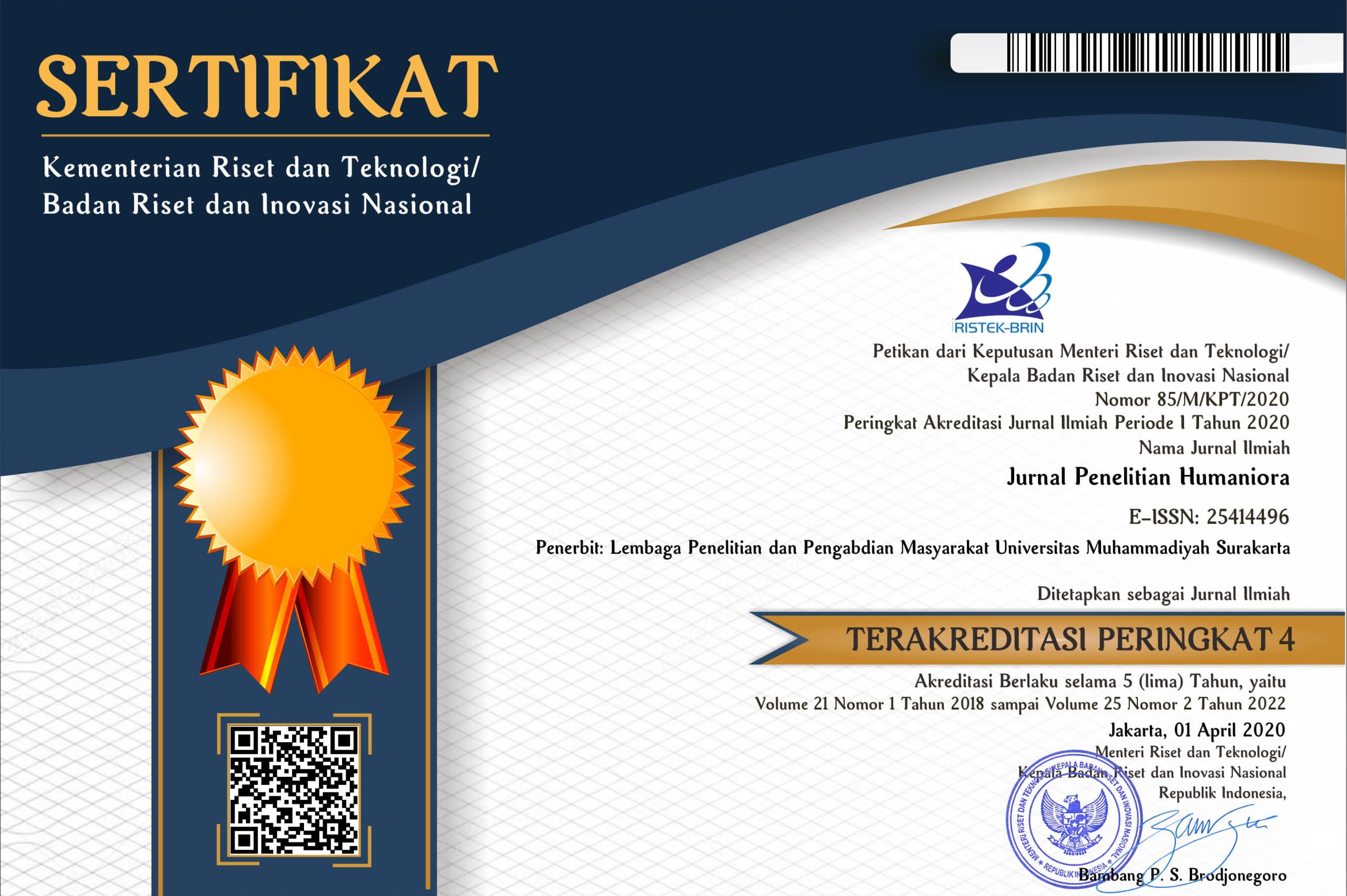EFL TEACHER’S BELIEF AND PRACTICE ON INTEGRATING ICT IN THE CLASSROOM: A CASE STUDY ON THE IMPLEMENTATION OF SAMR MODEL IN TEACHING READING DESCRIPTIVE TEXT AT MA ASSALAM, SUKOHARJO
Asep Budiman Budiman(1*), Rani Rahmawati(2), Rizky Amalia Ulfa(3)(1) The Faculty of Teacher Training and Education Sebelas Maret University, Indonesia
(2) The Faculty of Teacher Training and Education Sebelas Maret University, Indonesia
(3) The Faculty of Teacher Training and Education Sebelas Maret University, Indonesia
(*) Corresponding Author
Abstract
21st century learning demands the integration of Information and Communication
Technology (ICT) in teaching and learning process. Regarding this issue, this research is
aimed at investigating English as a foreign language (EFL) teacher’s belief and practices on
the integration of ICT in English language teaching. To reach the objective, a case study on
an individual teacher was used in this research. The participant was purposively and
theoretically selected because she was considered as the informant who could give
sufficient information to answer the research questions. Teacher’s interview and classroom
observation were used as the data collecting techniques. Iterative data collection and
analysis were conducted continuously till theoretical pattern of concepts and categories
were achieved. The Substitution Augmentation Modification Redefinition (SAMR) model
was used as the data analysis tool resulted from the classroom observation to reveal to what
extent the teacher implements ICT integration. The results of this research indicate that the
teacher believes that integrating ICT is very important as ICT has ability to make
transformation of all educational aspects by making use of it to reach
instructional objectives then the quality of teaching and learning will improve. The
results also indicate that there is no discrepancy between belief and practice as the teacher
has been integrating ICT in the classroom. However, the teacher is still on the substitution
and augmentation stages in integrating ICT and hardly achieves modification and redefinition
stages. These results suggest that teachers be prepared for ICT integration to create more
meaningful learning in the classroom.
Technology (ICT) in teaching and learning process. Regarding this issue, this research is
aimed at investigating English as a foreign language (EFL) teacher’s belief and practices on
the integration of ICT in English language teaching. To reach the objective, a case study on
an individual teacher was used in this research. The participant was purposively and
theoretically selected because she was considered as the informant who could give
sufficient information to answer the research questions. Teacher’s interview and classroom
observation were used as the data collecting techniques. Iterative data collection and
analysis were conducted continuously till theoretical pattern of concepts and categories
were achieved. The Substitution Augmentation Modification Redefinition (SAMR) model
was used as the data analysis tool resulted from the classroom observation to reveal to what
extent the teacher implements ICT integration. The results of this research indicate that the
teacher believes that integrating ICT is very important as ICT has ability to make
transformation of all educational aspects by making use of it to reach
instructional objectives then the quality of teaching and learning will improve. The
results also indicate that there is no discrepancy between belief and practice as the teacher
has been integrating ICT in the classroom. However, the teacher is still on the substitution
and augmentation stages in integrating ICT and hardly achieves modification and redefinition
stages. These results suggest that teachers be prepared for ICT integration to create more
meaningful learning in the classroom.
Keywords
teacher’s belief, ICT integration, SAMR model, EFL context
Full Text:
PDFArticle Metrics
Abstract view(s): 827 time(s)PDF: 2995 time(s)
Refbacks
- There are currently no refbacks.











